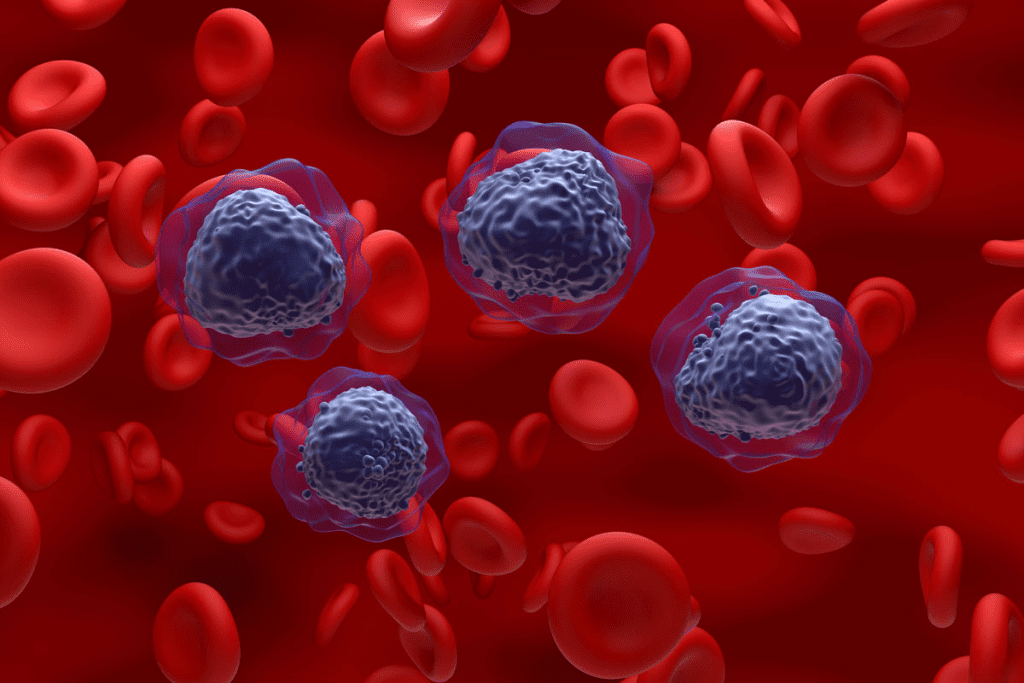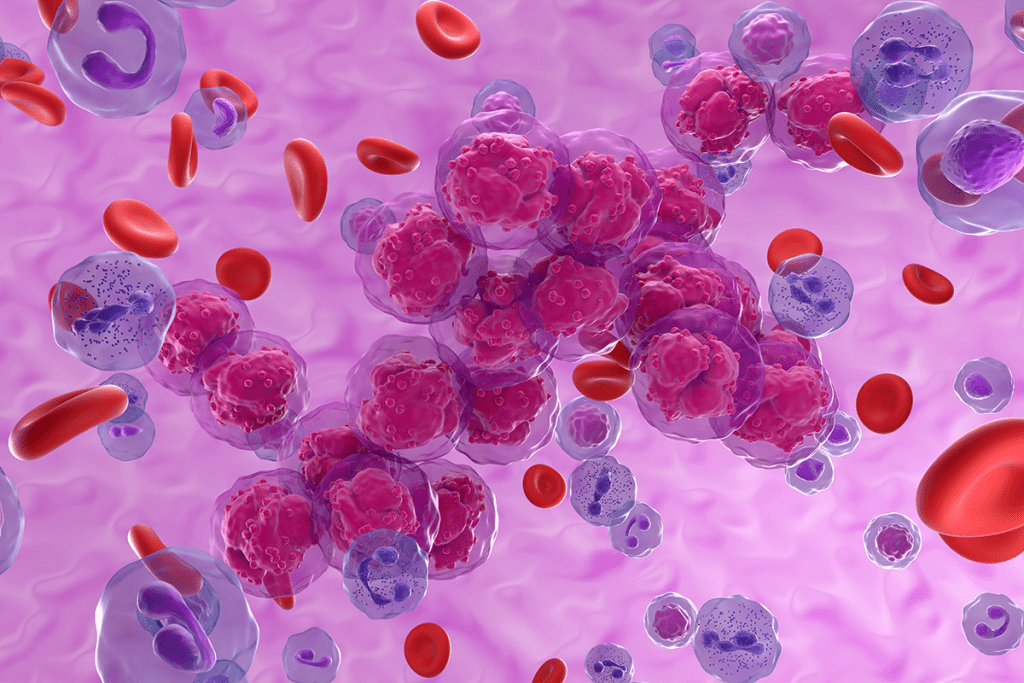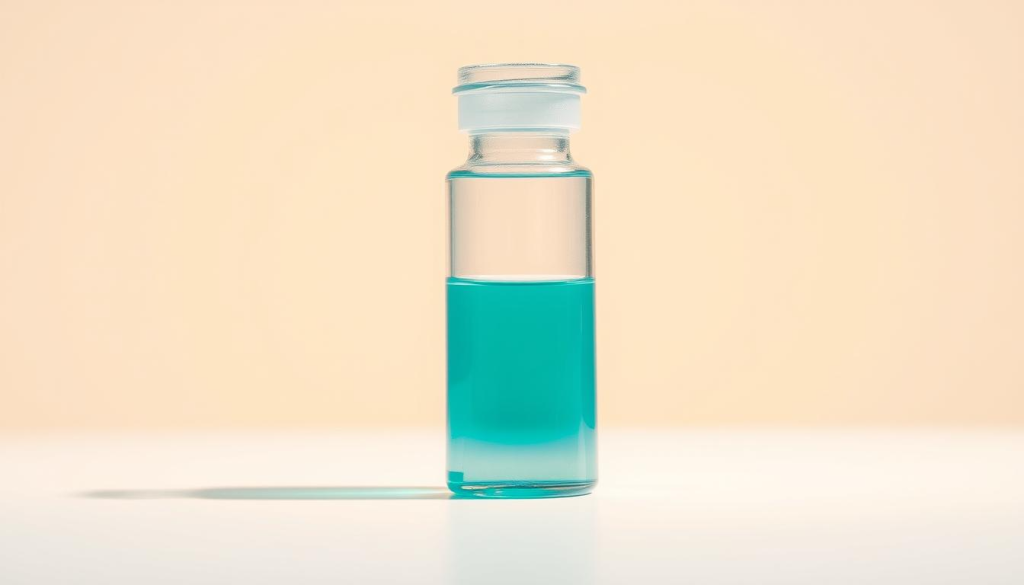Last Updated on November 13, 2025 by
Understand the initial, intensive phase. We explain the key drugs and goal of the 7-day protocol used in many acute leukemia treatments for remission.
The “7+3” induction chemotherapy regimen is key in treating acute myeloid leukemia (AML). It mixes 7 days of cytarabine with 3 days of an anthracycline, like daunorubicin.

LeukemiaIntroduced in 1973, the “7+3” regimen has helped many patients. It works well for about 66% of patients. But success depends on age, genetic risk, and health.
Acute myeloid leukemia treatment is complex. The “7+3” regimen is just one part. Top hospitals like livhospital.com lead in AML care.
AML, or Acute Myeloid Leukemia, is a blood and bone marrow cancer. It’s marked by fast-growing bad white blood cells. Knowing about AML helps us see why treatments like the “7+3” protocol are important.

AML is when bad cells grow too fast in the bone marrow and blood. The World Health Organization (WHO) now classifies AML based on genetics, looks, and how it acts. This helps doctors understand and treat AML better.
The old French-American-British (FAB) system is outdated, but it helps us see AML’s different types. It looks at how cells are formed and what type they are.
Key classification criteria include:
AML is rare, making up 1% of all cancers. But it’s common in adults over 65. This shows it’s a serious concern for older people.
Many things can increase your risk of getting AML. These include:
Knowing these risks helps doctors figure out your chances of getting AML. It also helps them decide the best treatment for you.
The “7+3” induction chemotherapy protocol is a key treatment for Acute Myeloid Leukemia (AML). It has been widely used for many years.
The “7+3” regimen involves giving cytarabine for 7 days. It also includes short infusions of an anthracycline on the first 3 days. This mix is important for fighting leukemia by targeting cells at different growth stages.
“7+3” means 7 days of cytarabine and 3 days of an anthracycline. Cytarabine stops leukemia cells from growing by messing with their DNA. Anthraclines break DNA strands, causing cells to die.
This mix of drugs in the “7+3” protocol aims to kill more leukemia cells. It also tries to prevent drug resistance. By hitting cells at various growth stages, it boosts the chance of complete remission.
Knowing about the “7+3” protocol is key for AML patients getting induction therapy. It helps them understand the treatment, its side effects, and why sticking to the plan is important.
Exploring the “7+3” protocol shows its vital role in leukemia AML treatment. Its success has made it a benchmark for new treatments.
Cytarabine is a key part of the “7+3” treatment for acute myeloid leukemia (AML). It helps stop leukemia cells from growing by messing with their DNA. This is how it fights cancer.
Cytarabine stops DNA replication by blocking DNA polymerase. This action slows down leukemia cell growth. It’s a main reason why it’s used in AML treatment.
It’s great at killing fast-growing cells, which is why it’s good for AML. It also tries to avoid harming healthy cells. This makes it very useful in fighting cancer.
The “7+3” regimen gives cytarabine for 7 days at 100-200 mg/m ²/day. This way, it’s more effective and has fewer side effects.
By giving it for a long time, we make sure leukemia cells get it a lot. The dose is just right to be effective without causing too much harm. This is why it’s a common treatment for AML.

The “7+3” regimen, with cytarabine, is a proven treatment. Its cycle length is set to get the best results for AML patients. Knowing how cytarabine works helps us understand AML treatment better.
Anthracyclines are a key part of the “7+3” treatment for AML. They are given over three days. These compounds are important for targeting leukemia cells effectively.
Daunorubicin and idarubicin are the main anthracyclines for AML treatment. Daunorubicin is well-known, and idarubicin is very potent. It’s used in many treatment plans.
The usual dose of anthracyclines in the “7+3” regimen is 60-90 mg/m ²/day for three days. This dose is important for the best results and to avoid side effects.
Anthracyclines stop DNA and RNA making by getting in between the DNA strands. This makes leukemia cells die. It’s why anthracyclines are key in AML treatment.
Knowing how anthracyclines work in AML treatment is vital. They are a cornerstone in the fight against AML. As we look for new treatments, anthracyclines will keep playing a big role.
Leukemia treatments, like the “7+3” regimen for Acute Myeloid Leukemia (AML), are key in hematological oncology. We’ve made big steps in treatment, but we’re not there yet.
The “7+3” regimen mixes cytarabine and anthracyclines. About 66% of patients get complete remission with it. But, about 37% of patients face relapse.
Relapse is a big problem in AML treatment. Even with high remission rates, the 37% relapse rate shows we need better treatments. Finding out why relapse happens is key to better care.
Many things affect how well AML treatment works. Age, genetic mutations, and health are big factors. Older patients and those with certain mutations face higher risks.
Every patient with AML is different. Customizing treatments based on individual factors is vital. This way, we can make treatments better for everyone.
Dealing with AML treatment is complex. We need a mix of the “7+3” regimen, new therapies, and personalized care. This approach can help make treatments more effective and improve patients’ lives.
Risk stratification is key in treating Acute Myeloid Leukemia (AML). It helps doctors tailor treatments to fit each patient’s needs. They look at different factors to find the best treatment plan.
Genetic and molecular factors greatly affect AML treatment. “Certain genetic mutations can greatly change how well a patient responds to treatment,” say top hematologists. We look at:
Age is also very important in AML risk stratification. Older patients often face a tougher time because of:
We consider these when planning treatment.
The risk assessment process shapes treatment choices, including:
Knowing a patient’s risk helps us give personalized care that can lead to better results.
As a leading expert points out, “Risk stratification is essential for customizing treatment. It boosts the chances of success in AML patients.” Our method ensures each patient gets the right care for their unique situation.
Going through ‘7+3’ induction therapy for Acute Myeloid Leukemia (AML) is a big deal. It needs careful planning and support. Knowing each step of their journey helps us give them the best care.
First, a detailed check-up is done before starting ‘7+3’. We look at the patient’s health, how much leukemia they have, and any risks. Getting them ready for what’s coming is important. We talk about the treatment, possible side effects, and the role of supportive care.
Most patients need to stay in the hospital for ‘7+3’ because of serious side effects. Being in the hospital lets us watch them closely and act fast if problems happen. How long they stay depends on how they react to treatment and handle side effects.
Watching patients every day is key during ‘7+3’ treatment. Doctors keep an eye out for infections, bleeding, and other issues. They give supportive care like blood transfusions, antibiotics, and other help to manage side effects and aid in recovery.
Understanding the ‘7+3’ treatment journey is vital for top-notch care. By giving full support and guidance, we help patients face AML treatment challenges. This way, we can boost their chances of a better outcome.
Dealing with the side effects of the “7+3” chemotherapy protocol is key in AML treatment. This regimen, made of cytarabine and anthracyclines, fights AML well but brings big side effects.
“The ‘7+3’ regimen is a mainstay in AML treatment, but it comes with its own set of challenges,” notes a top hematologist. “It’s vital to manage side effects to help patients finish their treatment and get the best results.”
Big complications from the “7+3” regimen include infections and bleeding. Patients face a high risk of infections because of neutropenia. This is when there are too few neutrophils, a white blood cell type important for fighting off infections.
Infection Prevention is a big part of supportive care. This includes antibiotics and antifungal meds, plus growth factors to boost white blood cell production.
Another big worry with the “7+3” regimen is long-term heart damage, mainly from anthracyclines. These can harm the heart muscle, possibly causing heart failure.
Monitoring cardiac function before, during, and after treatment is key. This might include regular echocardiograms and checks on heart biomarkers.
By tackling these side effects, we can improve patient outcomes and life quality. “It’s not just about fighting AML; it’s about caring for the whole patient through their treatment,” stresses an oncologist focused on AML care.
After getting remission with the “7+3” regimen, the next big step is post-remission therapy for AML. We know stopping relapse is key. There are many ways to treat AML after remission.
Consolidation chemotherapy is a common next step. It uses high doses of chemo to kill any remaining leukemia cells. There are different ways to do consolidation chemo, but they’re all important for keeping remission. The right chemo plan depends on the patient’s health and AML risk.
Stem cell transplant is another choice, aiming to cure by replacing bone marrow with healthy stem cells. We think about a stem cell transplant for high-risk AML or relapse. Choosing a stem cell transplant depends on the patient’s risk and health.
Some patients might get maintenance therapy with Onureg (azacitidine). Onureg is made for AML patients who’ve reached remission but could relapse. Onureg for AML has been shown to keep remission and boost survival. Maintenance therapy helps keep the good effects of the first treatment and lowers the risk.
In summary, post-remission therapy is a vital part of AML treatment. It offers many options based on the patient’s needs and risks. By using these strategies, we can better help AML patients.
Treating acute myeloid leukemia (AML) in special populations needs a custom plan. The standard ‘7+3’ regimen works well for many, but some need special care. This is because each person’s situation is different.
Elderly patients face challenges due to health issues and reduced strength. They are more likely to feel the harsh effects of strong chemotherapy. We might lower the doses of certain drugs to make treatment safer and more effective.
For example, we can reduce the dose of drugs that might harm the heart. This is a big concern for older adults.
Patients with organ problems, like kidney or liver issues, need special attention. We adjust the doses of drugs that these organs process. This helps avoid too much harm from the treatment.
For instance, those with kidney problems might get a lower dose of a certain drug. This prevents harmful build-up.
We’re looking into new ways to treat special populations. This includes using less intense treatments or new drug combinations. These options might be easier for vulnerable patients to handle.
Adding targeted therapies to treatment plans can also help. This approach might lead to better results for these patients.
By making the ‘7+3’ regimen fit each patient’s needs, we can improve their care. We focus on each person’s unique situation and adjust their treatment plan as needed.
New discoveries in AML treatment are leading to innovative therapies beyond the ‘7+3’ chemotherapy. Our growing knowledge of AML’s genetics and molecules is driving the creation of targeted treatments and new drug combinations. These are being tested in clinical trials.
Research in AML treatment is focusing on targeted therapies based on genetic mutations. Scientists are finding specific mutations that cause AML. They’re making drugs that target these mutations, hoping for better and safer treatments.
FLT3 inhibitors are showing great promise for AML patients with FLT3 mutations. Also, IDH1 and IDH2 inhibitors are being studied for AML patients with IDH1 or IDH2 mutations.
Researchers are also looking into novel drug combinations in clinical trials. These combinations aim to make treatments more effective and reduce side effects. For example, mixing hypomethylating agents with other targeted therapies is showing promise for AML patients.
Clinical trials are key to proving the safety and effectiveness of these new treatments. By joining these trials, patients can get access to potentially life-saving therapies. They also help advance AML treatment.
As we explore new ways to treat AML, it’s clear that the future is in personalized, targeted care. This approach uses the latest in genetic and molecular research.
We are seeing big changes in how we treat acute myeloid leukemia (AML). New research and therapies are coming along. The “7+3” regimen is key, but new treatments are on the horizon to help patients more.
Treatment for AML is getting more tailored, thanks to risk stratification. This means doctors can choose the best treatment for each patient. The focus is now on genetic and molecular factors, making care more precise.
New therapies are bringing hope to AML patients. We’re dedicated to keeping up with these advancements. This ensures our patients get the top care available. The future of AML treatment looks bright, thanks to ongoing innovation and a focus on better patient outcomes.
The “7+3” regimen is a common treatment for acute myeloid leukemia (AML). It involves 7 days of cytarabine and 3 days of an anthracycline.
The “7+3” regimen helps about 66% of AML patients reach complete remission. Success rates can vary based on age, genetic risk, and health.
Cytarabine stops DNA replication in leukemia cells. It’s given for 7 days at 100-200 mg/m ²/day.
Anthracyclines, like daunorubicin, stop DNA and RNA synthesis. They’re given for 3 days at 60-90 mg/m ²/day to kill leukemia cells.
Side effects include infections, bleeding, and heart damage. Careful management and supportive care are needed.
Risk stratification assesses genetic and molecular factors, age, and health. It guides treatment intensity and the need for stem cell transplantation.
Options include consolidation chemotherapy, stem cell transplantation, and maintenance therapy with Onureg (azacitidine). Choices depend on risk profile and health.
Yes, the regimen can be adjusted for special populations. Dose adjustments and alternative schedules are used to tailor treatment.
New advances include targeted therapies and novel drug combinations. These are being tested in clinical trials, bringing hope for better outcomes.
AML treatment is changing with new research and therapies. Targeted therapies, new combinations, and personalized medicine are improving outcomes.
Subscribe to our e-newsletter to stay informed about the latest innovations in the world of health and exclusive offers!